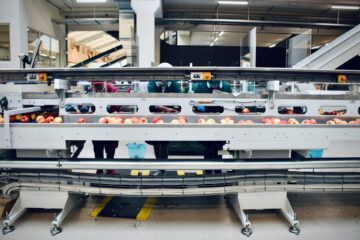In industries like warehousing, manufacturing, and logistics, forklifts are vital for efficient material handling. However, keeping track of multiple forklifts across a large facility or even multiple locations can be challenging. Forklift tracking provides a technological solution by using real-time data to monitor and manage forklift activity, ensuring better operational efficiency and enhanced safety. This article explores what forklift tracking is, its key features, and the benefits it offers.
What Is Forklift Tracking?
Forklift tracking involves using GPS, telematics, and other technologies to monitor forklift movements, performance, and usage in real-time. By equipping forklifts with tracking devices, businesses can collect and analyze data on their operations. This data provides insights into forklift locations, operator behaviors, fuel consumption, maintenance needs, and more.
Forklift tracking systems allow managers to make informed decisions about fleet usage, improve safety, and reduce operating costs. These systems are particularly useful in large warehouses and multi-site operations, where manual tracking would be too time-consuming and prone to errors.
Key Features of Forklift Tracking Systems
The key features of forklift tracking systems are as follows:
- Real-Time Location Tracking: Forklift tracking systems provide real-time visibility of each forklift’s location. Using GPS technology, managers can monitor routes and identify any inefficiencies or delays, ensuring that forklifts are always in the right place at the right time.
- Operational Data Collection: Beyond location tracking, these systems gather data on forklift usage, including working hours, idle times, and fuel or battery levels. This allows for better fleet utilization, helping managers identify underutilized equipment and redistribute tasks efficiently.
- Impact Detection: Many systems include impact sensors that detect collisions or rough handling. These alerts help reduce equipment damage and ensure that any accidents are investigated and addressed promptly, promoting a safer work environment.
- Operator Monitoring: Forklift tracking systems can also track operator performance, providing insights into their driving habits. Data on speeding, harsh braking, or excessive idling can be used to offer targeted training to improve safety and efficiency.
- Maintenance Alerts: These systems can schedule and track maintenance based on usage data, sending alerts when a forklift requires servicing. By proactively addressing maintenance needs, businesses can reduce downtime and extend the lifespan of their equipment.
Benefits of Forklift Tracking
Below are the key benefits of using a forklift tracking system:
1. Enhanced Safety
Forklift tracking significantly improves workplace safety by providing real-time data on operator performance and monitoring unsafe behaviors like speeding or rough driving. Immediate alerts allow for quick corrective action, reducing the likelihood of accidents.
Furthermore, impact detection helps manage and investigate collisions, ensuring that damage to equipment is minimized and that safety protocols are followed. This not only protects operators but also helps reduce liability and legal risks.
2. Increased Efficiency
Tracking systems allow businesses to optimize the use of their forklifts. By analyzing data on operational hours, idle time, and routes, managers can streamline workflows, ensuring that tasks are completed more efficiently. For example, knowing which forklifts are underutilized helps in redistributing work and avoiding bottlenecks.
Forklift tracking also improves task coordination. Real-time location data ensures that forklifts are where they need to be, reducing delays and improving overall productivity.
3. Reduced Operating Costs
Forklift tracking helps businesses cut costs in several ways. By optimizing routes and reducing idle time, fuel and energy costs are minimized. Additionally, proactive maintenance tracking ensures that forklifts are serviced before major issues arise, reducing the need for expensive repairs.
Tracking usage patterns also helps businesses avoid overworking certain forklifts, which extends their lifespan and lowers replacement costs. Furthermore, accurate data on fleet usage can help right-size the fleet, avoiding the costs of maintaining unnecessary equipment.
4. Data-Driven Decision Making
The real-time data provided by forklift tracking systems empowers managers to make better decisions. Detailed reports on fleet usage, operator performance, and maintenance needs offer insights that help in adjusting workflows, reducing inefficiencies, and improving safety measures.
With this data, businesses can continuously refine their operations, ensuring they are getting the most out of their forklift fleet. Whether it’s adjusting routes for better efficiency or scheduling operator training based on performance data, forklift tracking enables informed decision-making.
Forklift tracking offers businesses a comprehensive way to improve both safety and efficiency by system providers such as Trio Mobil. By providing real-time insights into forklift activity, these systems allow managers to optimize operations, reduce downtime, and enhance workplace safety. The data-driven approach to fleet management also helps cut costs and ensures that forklifts are used effectively. For any business that relies on forklifts for material handling, implementing a forklift tracking system is a smart investment that leads to safer, more productive operations.



